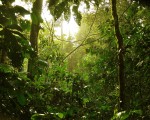
Bandar Seri Begawan was damp and overcast when we awoke, and we made our way to the jetty early on Thursday morning, bypassing the smell of durian fruit from the busy riverside market. There were many passengers at the jetty, day trippers to Temburong National park, university students and locals returning to Bangar town. We found Gary our guide, purchased our ferry tickets and stepped out into the drizzling rain to board the boat that would bring us 45 minutes upstream, via the mangroves to Bangar. The river level was high and the boat ride pretty comfortable, Gary explained that in the dry season it’s a much different experience, where the boat must take corners at 45 degree angles. A lone crocodile blended into the muddy rivers banks, more may have lurked in the river. En route, we traveled from Brunei water ways, to no mans land, and entered Brunei water territory again.
Arriving at Bangar, we went to the local market to pick up some snacks to enjoy at the village, being Friday, a sabbath day the market was decidedly quiet, only 1/4 of the many stalls were occupied, a familiar smell hung in the air…..durian and it’s smelly little brother, jackfruit! Gary found a lady selling jackfruit fritters, and tasty banana fritters. Another stall offered “wajid” which is red rice and sugar, formed into a paste and served in a banana leaf.
We left the market and traveled to the village about 15 minutes drive away. Gary explained how the people we were about to meet, the Iban, had come to be live in the area. During WW II, the British persuaded some of the Iban people, natives of Sarawak to move to the area and fight in their name. The Iban, known as the “head-hunters” could survive in the rain forest, providing defense, as well as being deadly warriors. Their nickname came about due to their keeping the skulls of their victims as a trophy. Deeply superstitious and well practiced in black magic, the Iban were guardians of the spirit that lived within the skull and cared for it with much respect. The Iban fought for the British in return for land, so that they could house their families, and build up their communities.
Sumbiling Eco Village is a joint venture project between Borneoguide.com and the Iban villagers of Kampung Sumbiling Lama. The company provides funding and management for the project, and the villagers provide manpower and cultural expertise, they are intricately involved in the project and provide a real insight into life in the rainforest jungle. The camp is located a short walk from the village, along the Temburong river. We dumped our rucksacks at our riverside tent and made our way to dining area. We enjoyed hot tea with our market snacks while Gary chatted further about the village, Brunei history in general and our brief for the day…..it was quickly evident that he was a minefield of information!
We had decided to do the rainforest trek on our first day, which would take us across the river and through secondary rainforest into primary. A primary rainforest is in it’s original, pristine condition, relatively untouched by human activities. Per Brunei’s constitution, his Majesty the King, has full executive powers in governing the state. This in part explains how Brunei’s rainforest is so plentiful and untouched. The massive destruction of this natural resource to make way for palm tree plantations, as experienced in parts of Indonesian and Malaysian Borneo has simply not occurred in Brunei.
Gary gave Anne Marie rubber shoes to wear, footwear ideal for the mucky conditions we would encounter, unfortunately they did not have size 13 for Thomas. Accompanied by villagers Mangut, Sulaiman and Adila, we set off across the river in a traditional longboat, a flat-bottomed boat. Suliman and Mangut used long poles at either end to punt us across. We scrambled up the bank on the other side and Mangut gave Anne Marie a stick to assist through the muddy terrain. The sun blazed in the blue, unclouded sky and we were glad of the shade in the forest……surely it could not rain?
As we ventured deeper into the forest Gary and the guides identified different trees, vines and shrubs, we came upon a traditional trap used to catch unsuspecting wild boar, using a twig we released the trap…. It was fast, an unlucky boar could squeal his head off hanging upside down in the trap. Mangut, leading the way used his machete to cut wild fruits and leaves for us to sample. Some wild ginger was gathered for lunch. This also doubles as a natural mosquito repellant, Anne Marie wore some on her ear and it seemed to do the trick. While in the secondary rainforest, we crossed small streams with natural man-made bridges and waded through a fast flowing, though shallow river. Cicadas, a small insect with an unbelievably loud call echoed around us, the air was cool and damp. Mangut proffered handmade hats made from banana leaves, saying they would come in handy when the rain started. We continued on our way, taking in the beautiful surroundings, craning our necks to view the tall trees and breathing in cool, clean air.
At one of the many river crossings, Mangut and Adyillah left us to set up camp at another location and prepare lunch. Onwards and upwards we climbed and after 3 hours or so, we entered the primary rainforest. We did not travel upon well trod paths of previous visitors, Mangut used his machete to clear our way where a natural path did not exist.
Wearing only flip-flops, he breezed his way through the forest waiting patiently for us to catch up, Thomas taking many pictures while Gary continued to explain the forest and it’s history. Iban children accompany their parents into the forest from a young age so that they learn the cultures and traditions that connect the Iban to the land. Being the only people there in the luscious forest was simply breath-taking. It started to rain, we were shaded somewhat by the natural canopy overhead.
We crossed more streams and continued up and down hill, rain had washed the soil away from some tree roots which we used to steady ourselves.
After 1 hour we reached the campsite where Sulaiman and Adila had prepared a fire and a feast for our lunch: chicken and cabbage cooked the traditional way in a bamboo vine and some rice.
It was absolutely delicious, plentiful and perfect to carb up in advance of our return trek.
Mangut with his trusty machete cut down a water-filled vine and replenished our water botttles. After second helpings of food, we swam in the river to cool off.
Mangut and Sulaiman cleared the camp area after our lunch and we set off on way back to the village. More rivers to cross, more hills to climb and descend and lots of rain.
Our clothes were soaked through. Using banana leaves as shelter, we hiked through the pouring rain. Some fallen trees blocked our path which we scampered over and under, sidestepping the large ants.
We reached the riverside around 5pm having hiked for 6 hours. Tom and Gary waded across the river, their clothes already wet from the rain while Anne Marie took the boat with Mangut. Once ashore, we had quick showers, dry clothes , a cup of hot tea and chatted at the riverside about our amazing day. The Iban ladies prepared a feast for our dinner, local sabah vegetables, fresh fish with pineapple and rice. We delayed the scheduled night walk until the following day, by 8pm we were tucked up in our tent, exhausted from such an exhilarating day.
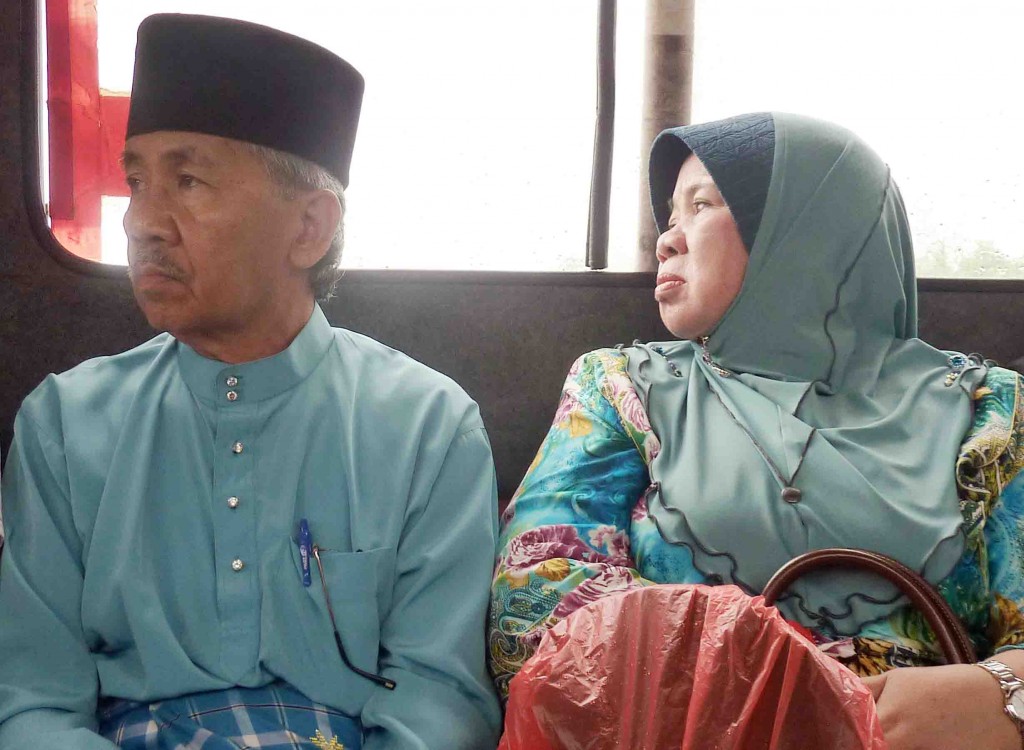
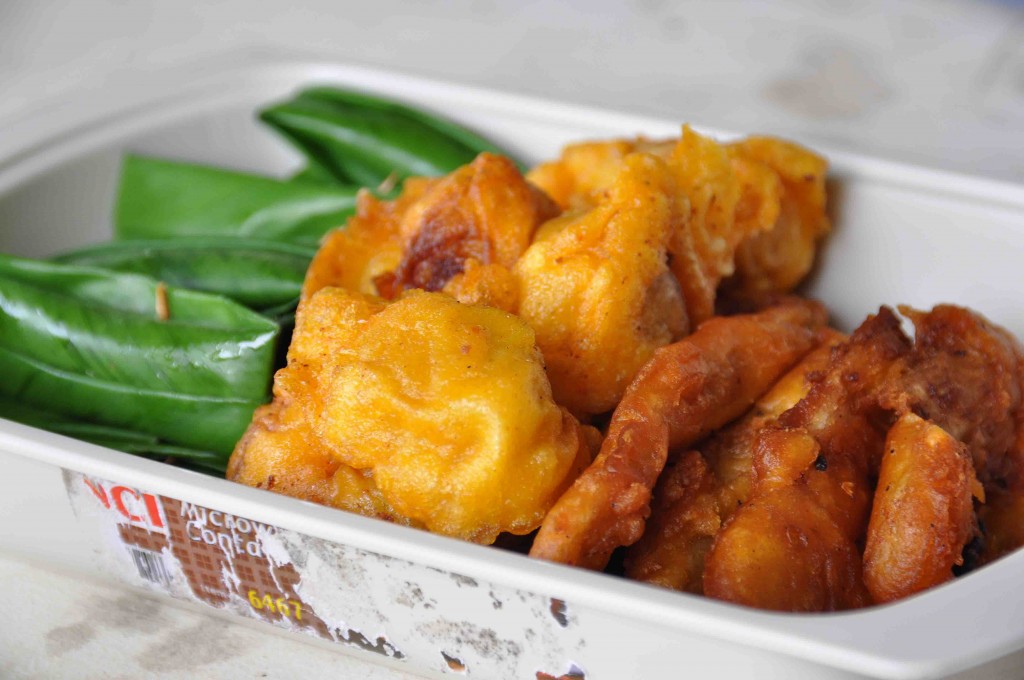
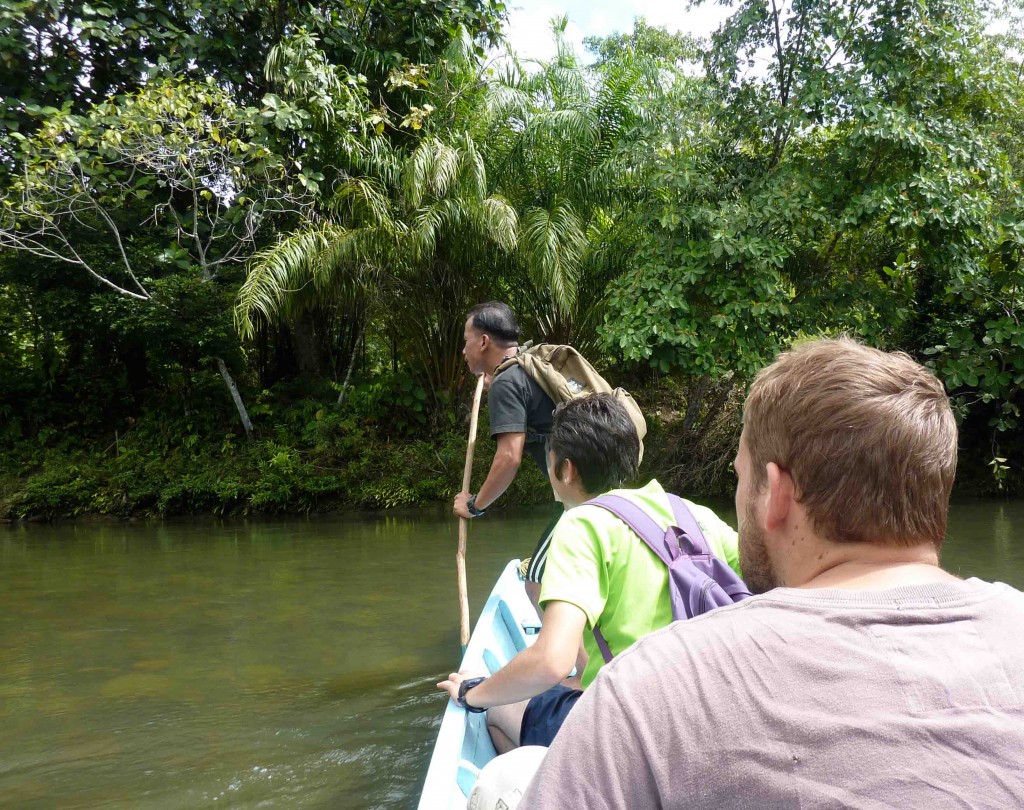
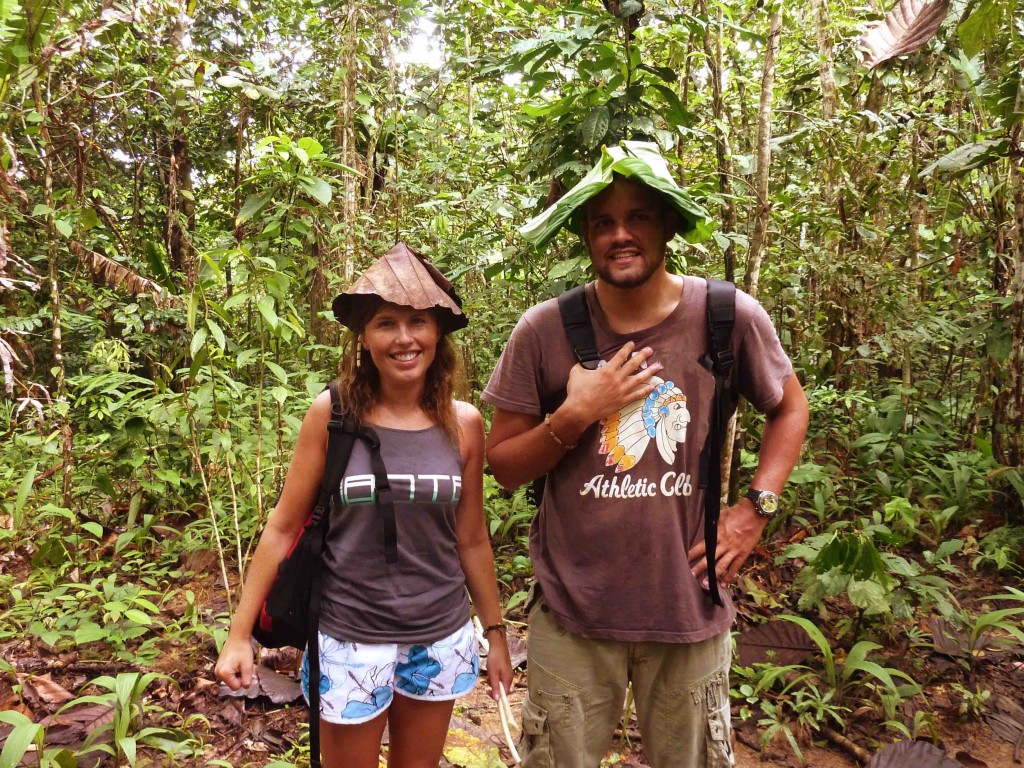
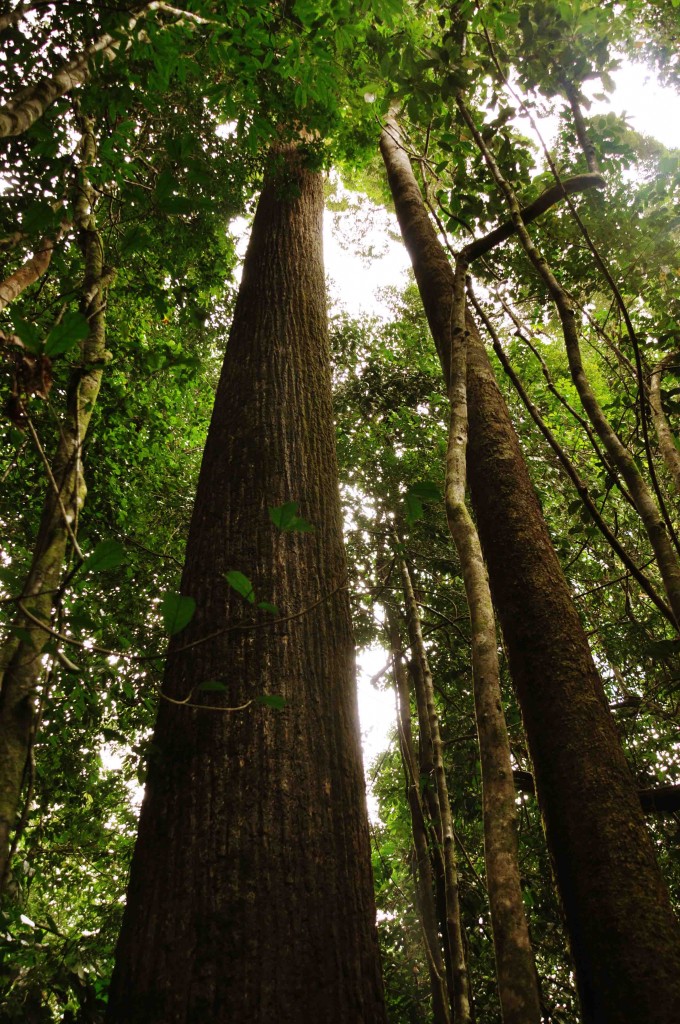
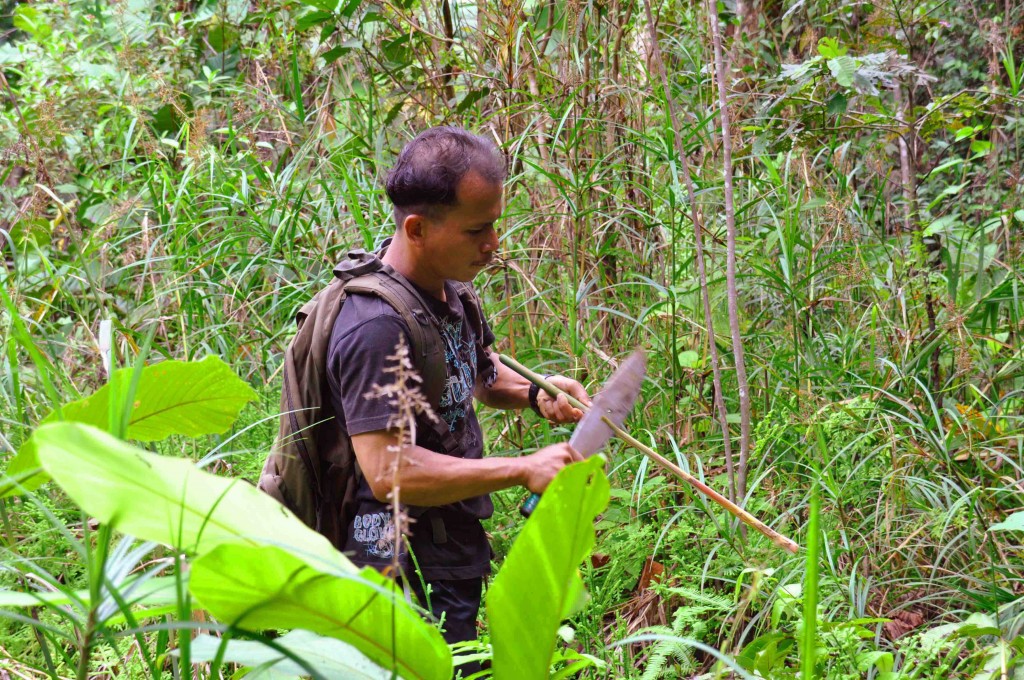
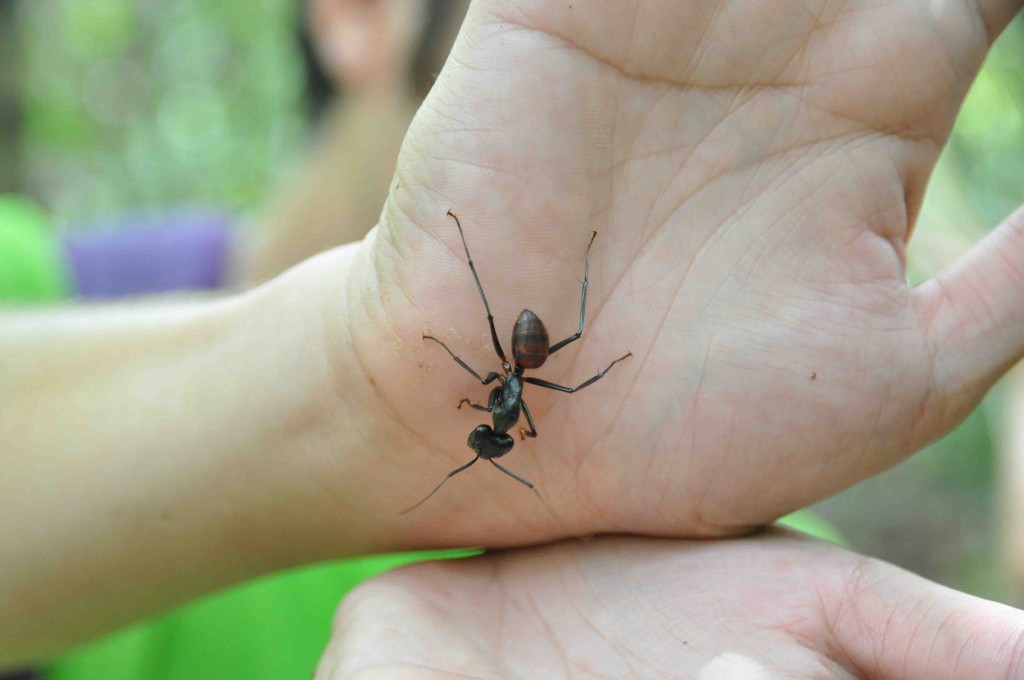
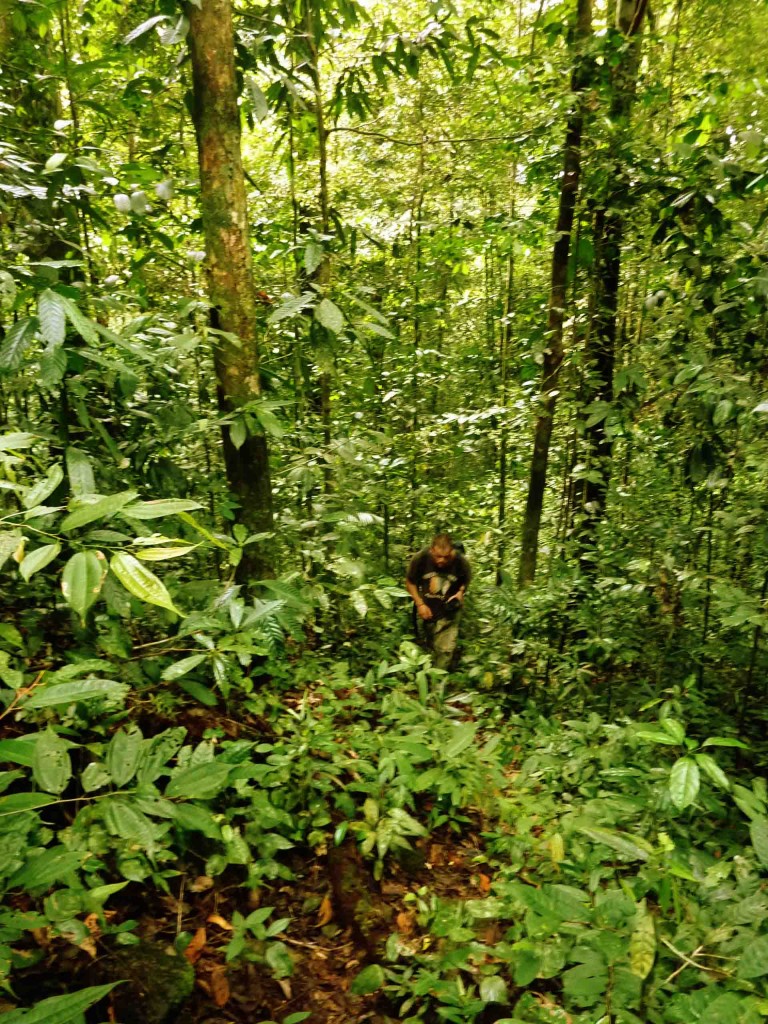
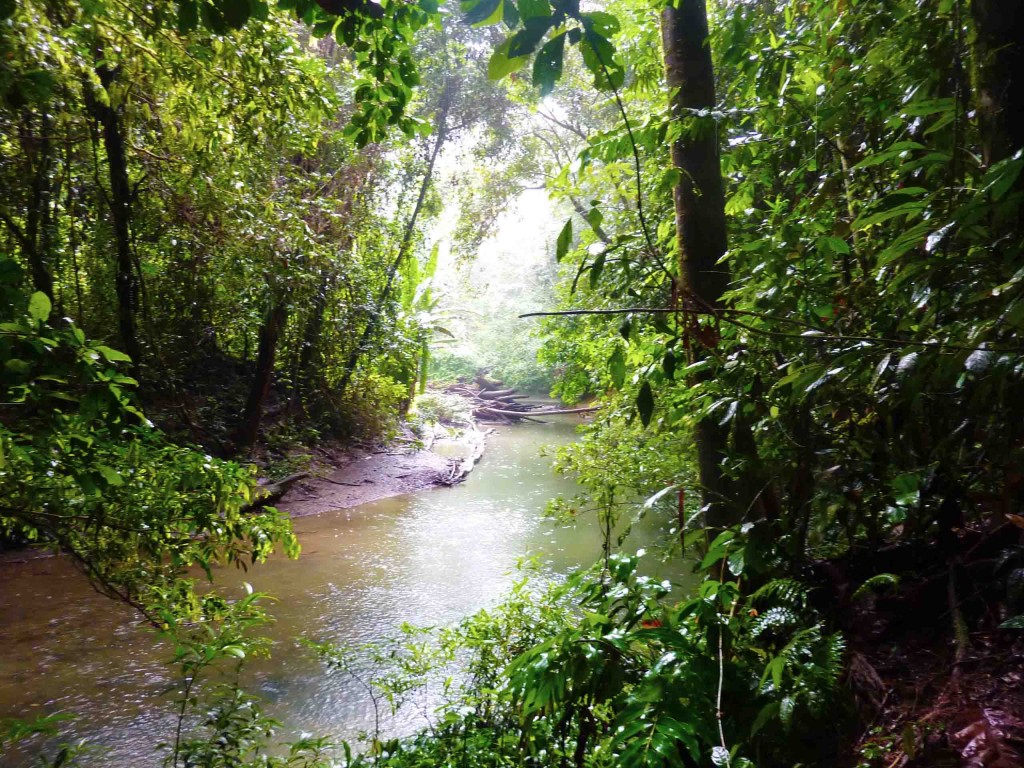
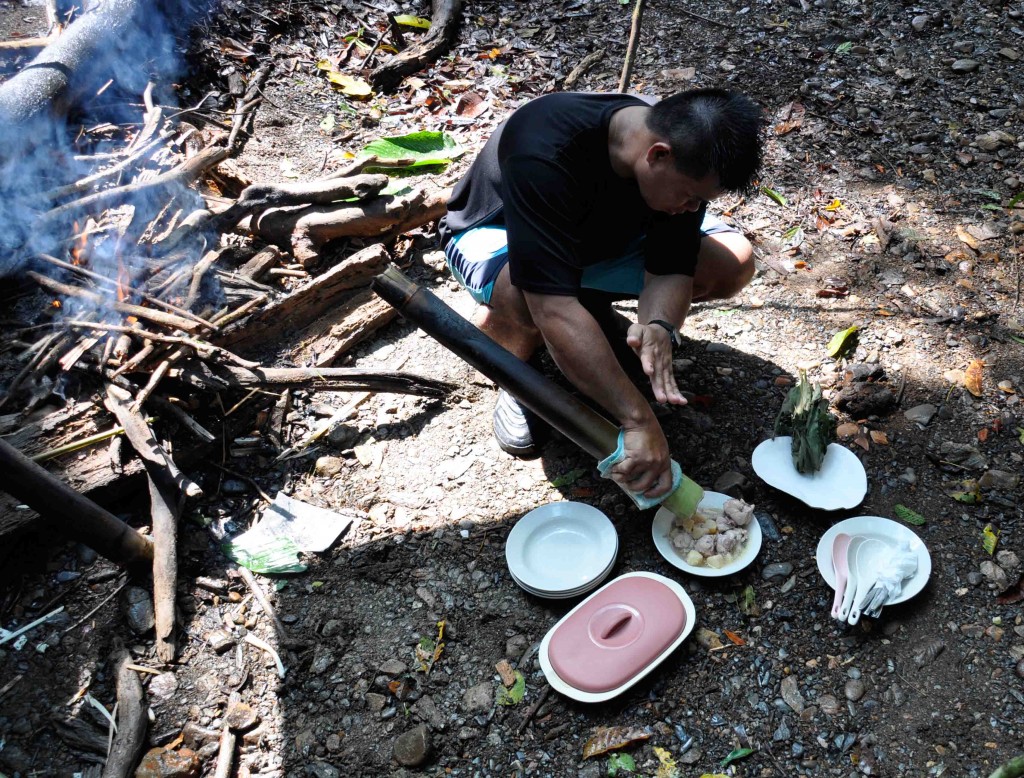
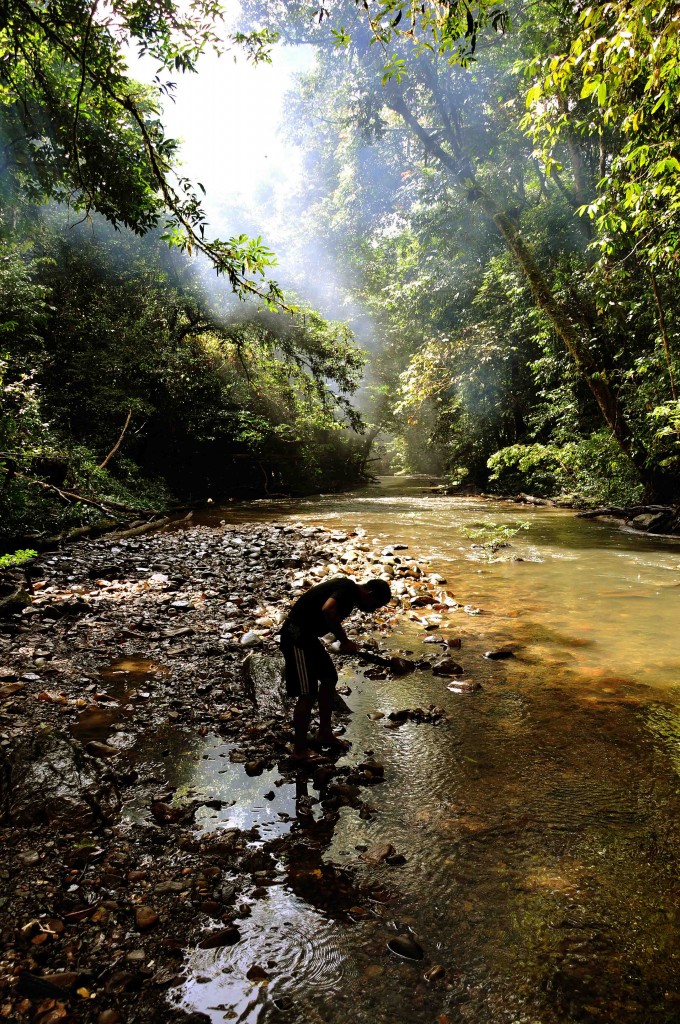
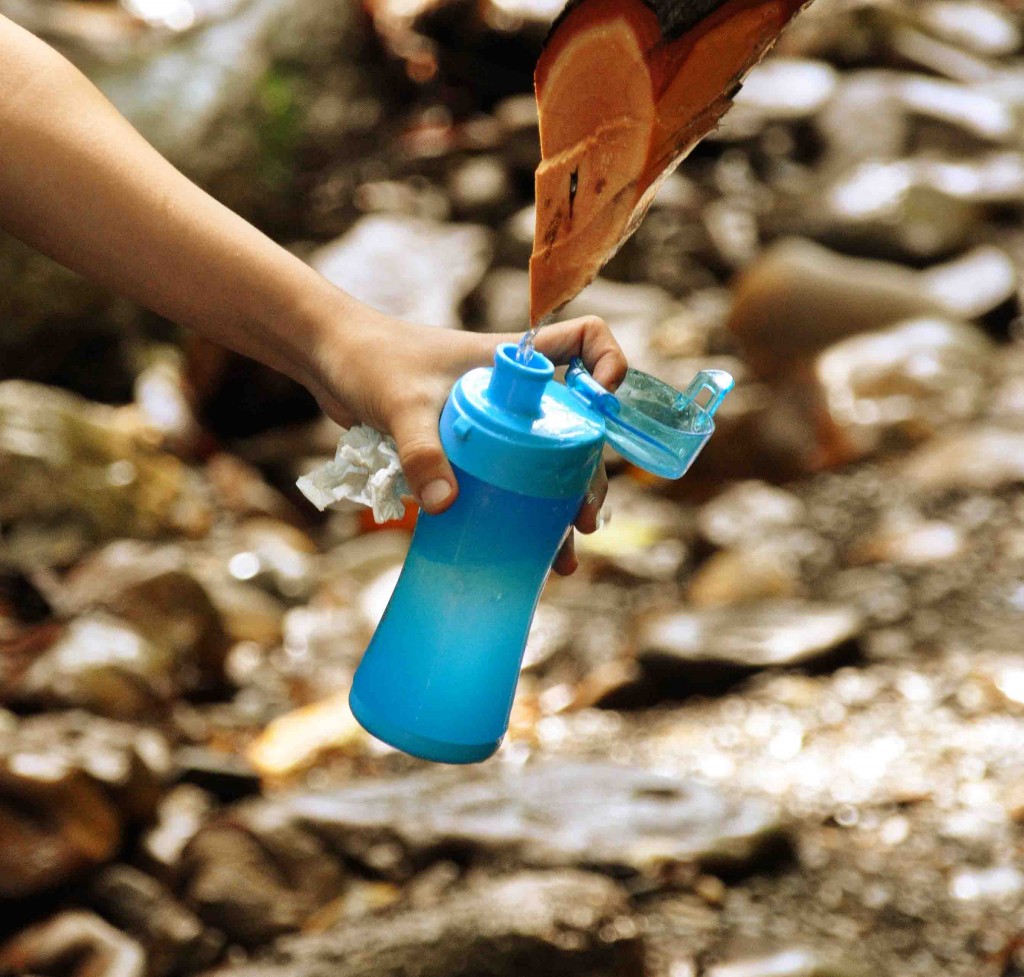
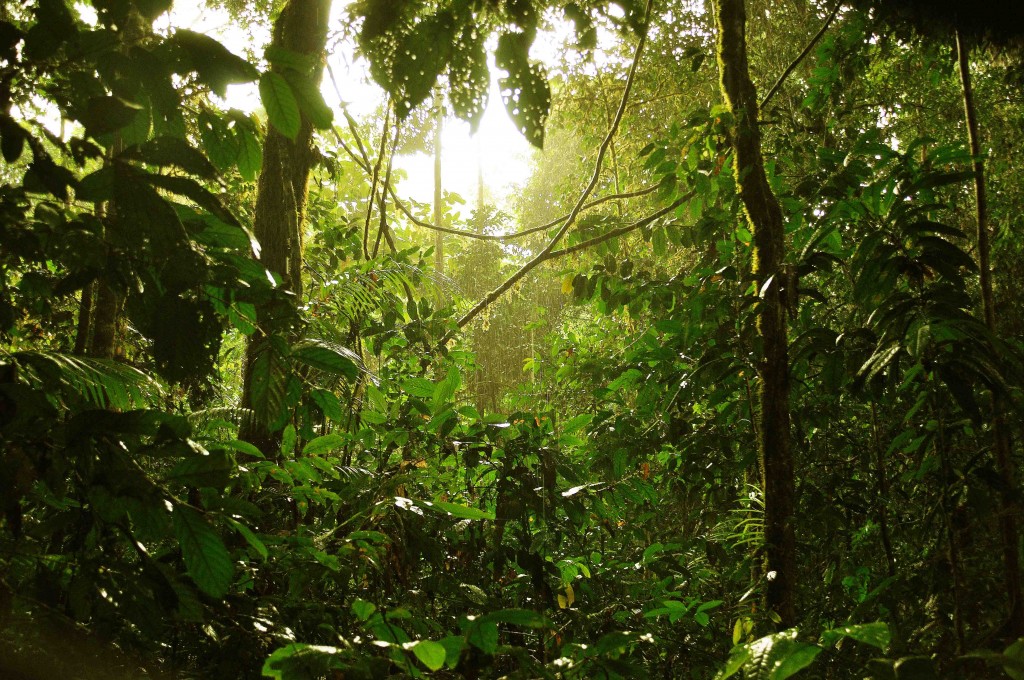
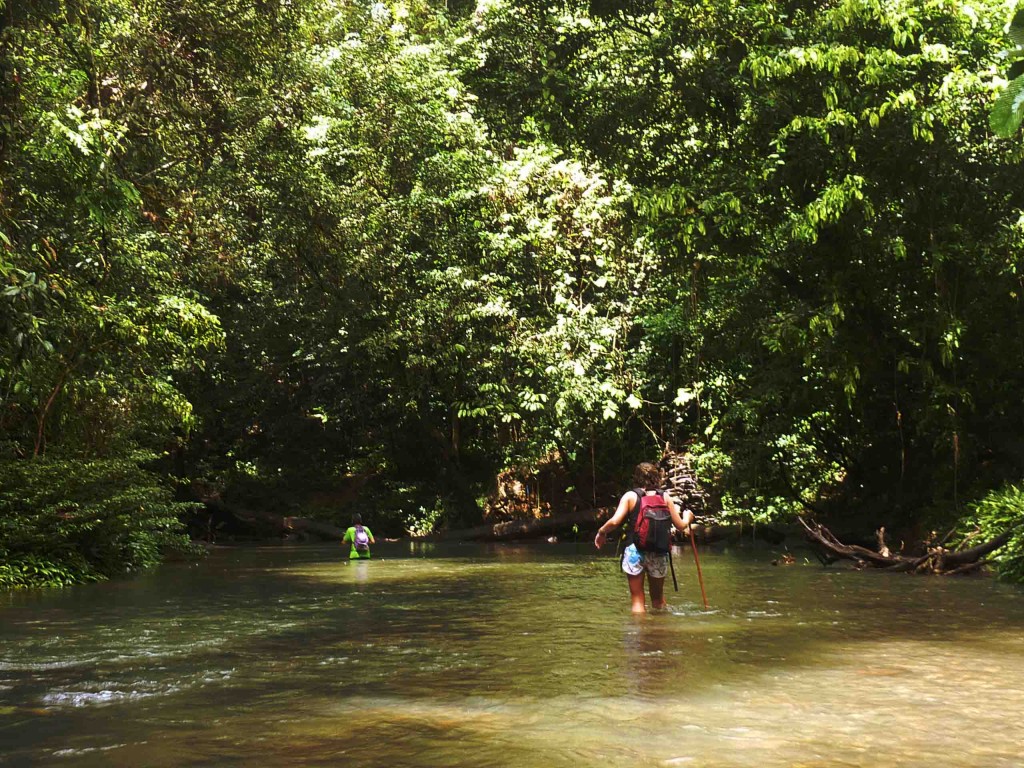
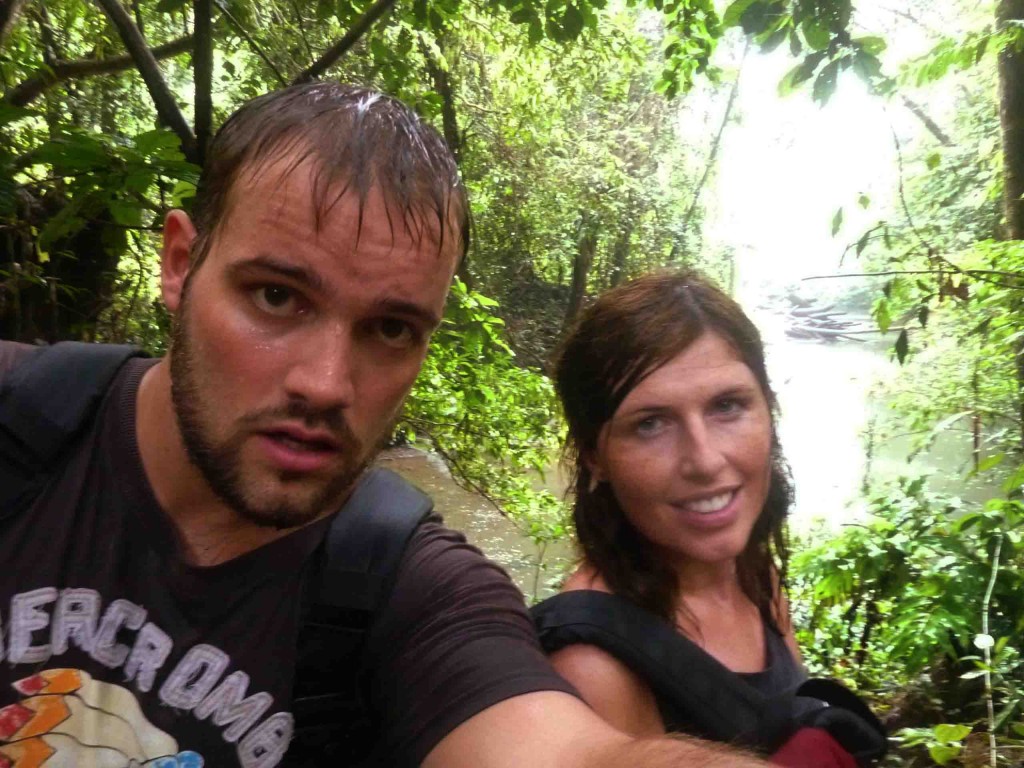
Une reine cette fourmi où pas? 🙂
On va aussi faire trois semaines en malaysie orientale, en mai. Je sens que je vais aimer ces bestioles.
Bisous a vous deux. Continuez à vous amuser
Pas très traditionnel votre kit picnic tupperware!
Ca avait l’air génial !! j’aurais adoré faire ça !
Merci pour toutes ces explications et les photos qui les accompagnent.
ps: ces chapeaux vous vont à ravir!
Gros bisous à vous deux profitez bien 🙂